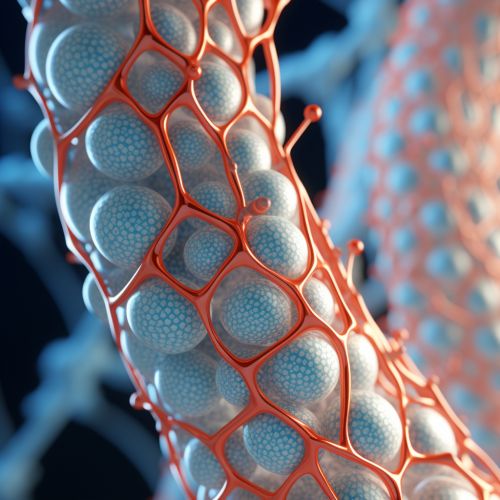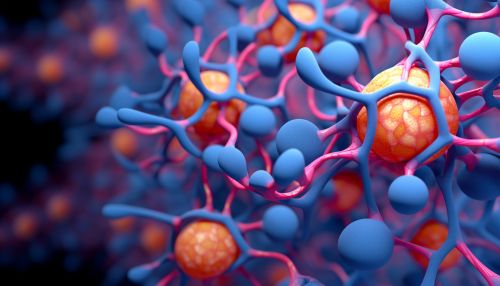Myosin
Introduction
Myosin is a superfamily of motor proteins best known for their roles in muscle contraction and in a wide range of other motility processes in eukaryotes. They are ATP-dependent and responsible for actin-based motility. The term was originally used to describe a group of similar ATPases found in the cells of both striated muscle tissue and smooth muscle tissue.
Structure
The structure of myosin is divided into two main parts: the head and the tail. The head region of the myosin molecule, also known as the motor domain, has ATPase activity and binds to actin fibers. The tail region interacts with other myosin molecules, allowing them to work in unison.


Function
Myosin proteins function as molecular motors in cells, using the energy from ATP hydrolysis to generate force and movement along actin filaments. This movement is crucial for a variety of cellular processes, including muscle contraction, cell division, and vesicle transport.
Types of Myosin
There are many types of myosin, each with a unique function. The most well-known type is myosin II, which is responsible for muscle contraction. Other types of myosin are involved in a variety of cellular processes, such as intracellular transport (myosin V) and cell division (myosin VI).
Myosin and Disease
Mutations in myosin genes can lead to a variety of diseases, including muscular dystrophies and heart diseases. For example, mutations in the MYH7 gene, which encodes a type of myosin found in heart muscle, can lead to hypertrophic cardiomyopathy, a condition characterized by thickening of the heart muscle.
